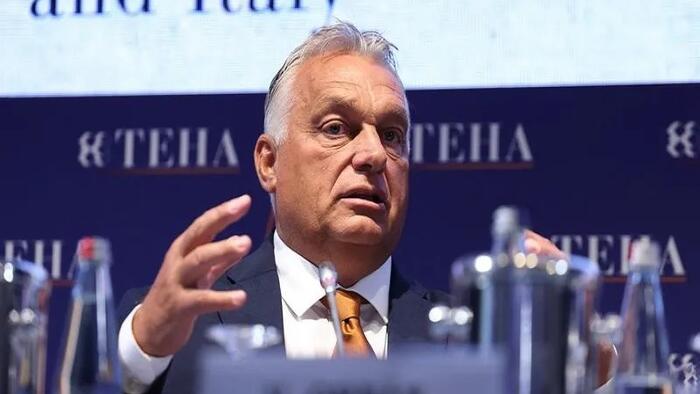Authored by Andrew Korybko via Substack,
Hungarian Prime Minister Viktor Orban told the press during his trip to Italy that “communication is number one, followed by a ceasefire, and only after that can we start talks about a peace agreement” between Russia and Ukraine.
He also added that the EU is against all three steps since it’s counterproductively pursuing a pro-war policy in that conflict. Here are three briefings about Orban’s peace trip over the summer for those who might have forgotten about it since then:
* 7 July: “Orban Shared Some Detailed Insight Into His Mediation Efforts”
* 20 July: “Orban’s Peace Mission Report To The EU Isn’t Anywhere As Scandalous As Some Might Think”
* 2 August: “Orban’s Insight Into The Global Systemic Transition & Hungarian Grand Strategy Is Worth Reading”
He’s therefore sincere with his ceasefire proposal, but it won’t amount to anything for now. A cessation of hostilities is completely out of the question for Russia so long as Ukraine continues occupying part of Kursk. Other “goodwill gestures” are still possible as is now known after Lavrov revealed that Russia was on the brink of reviving the grain deal this spring, but only because those are envisaged as costless means to the end of politically resolving this conflict. Here are three briefings on these calculations:
* 25 May: “Russia Is Open To Compromise But Won’t Agree To A Ceasefire That Doesn’t Meet Its Interests”
* 15 June: “What’s Really Behind Putin’s Generous Ceasefire Proposal?”
* 2 September: “Lavrov Revealed That Russia Was On The Brink Of Reviving The Grain Deal This Spring”
Considering this, the only chance for a ceasefire is if Ukraine agrees to the “goodwill gesture” of withdrawing from Kursk, though that’s unlikely after Zelensky confirmed prior speculation that his forces plan to indefinitely hold it. No progress on Orban’s proposal is therefore expected until Russia first pushes the Ukrainians out of Kursk, but there’s no telling how long that’ll take. Here are three briefings on this dimension of the conflict, which is now in its second month:
* 8 August: “Five Lessons For Russia To Learn From Ukraine’s Sneak Attack Against Kursk Region”
* 14 August: “Analyzing Putin’s Assessment Of Ukraine’s Incursion Into Kursk”
* 21 August: “Don’t Expect A Radical Response From Russia To The US’ Involvement In Ukraine’s Invasion Of Kursk”
Russia’s capture of Pokrovsk could compel Ukraine to withdraw from Kursk so as to prevent the collapse of the front lines, but there’s no guarantee that it won’t turn that city into the next Artyomovsk (Bakhmut), Avdeevka, or Mariupol, which could lead to it holding Kursk for a little longer. This sequence of events could revive interest in a ceasefire, but it might not unfold, or one side might still refuse to silence the guns even if it does. For that reason, nobody should expect a ceasefire anytime soon.
Loading…
Read the full article here

